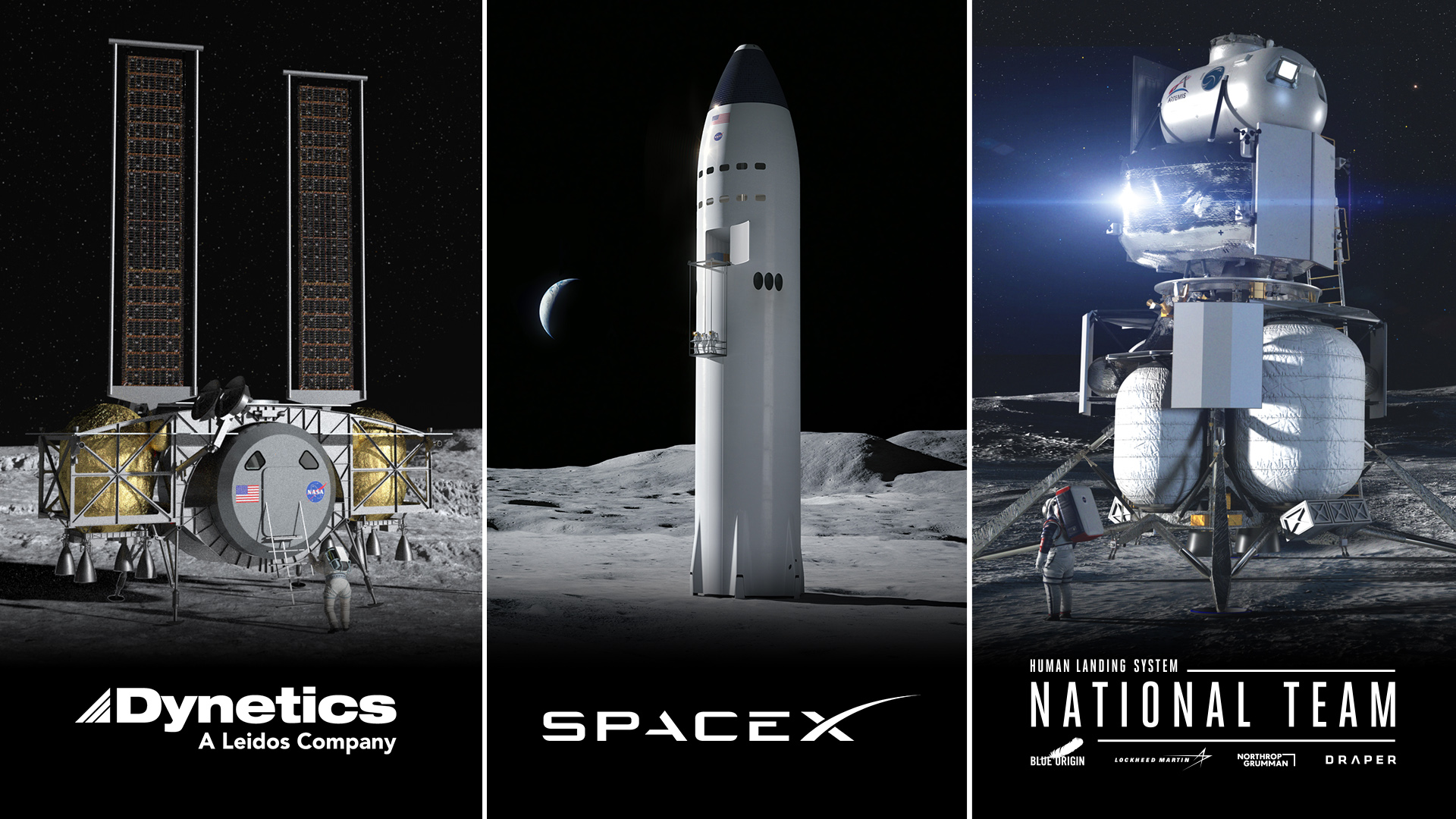
America’s goal to return humans to the Moon before the end of 2024 took a significant stride forward with today’s announcement by NASA Administrator Jim Bridenstine of the selection of teams led by Blue Origin, Dynetics and SpaceX to design and develop Human Landing System (HLS) concepts for the Artemis program.
In a media teleconference held Thursday afternoon, he was joined by Doug Loverro, associate administrator of NASA’s Human Exploration and Operations Mission Directorate, and Lisa Watson-Morgan, HLS program manager. Mr. Bridenstine outlined the importance of having a robust and sustainable HLS architecture as “the last piece that we need to get to the Moon”. He also pointed out that this is the first time the United States has had a human lunar landing system in formal development since the end of the Apollo era in 1972.
Several NASA efforts in recent decades to return astronauts to the Moon have met with frustration, chiefly due to excessive cost, unrealistic schedules and lack of requisite political support. Under President George H.W. Bush’s 1989-1993 administration, the Space Exploration Initiative (SEI) sought to establish a permanent human presence on the lunar surface and a longer-term objective of a crewed voyage to Mars. However, its immense cost earned the ire of lawmakers, one of whom called it “one giant leap for starry-eyed political rhetoric and not eve a small step for fiscal responsibility”.
The SEI breathed its last with the Clinton administration’s focus on a faster, better, cheaper way of doing business, but in 2004 during President George W. Bush’s White House tenure the Vision for Space Exploration (VSE) was born. It too envisaged a permanent return to the Moon and yielded plans to develop a series of powerful rockets and the Orion spacecraft. President Barack Obama’s administration kept much of the Orion architecture and kickstarted the development of the Space Launch System (SLS) super-heavylift booster, but shifted NASA’s focus away from the Moon and onto other destinations, including an asteroid and eventually Mars. More recently, in December 2017, President Donald Trump signed Space Policy Directive-1, authorizing NASA to proceed with efforts to again land U.S. astronauts on the Moon, originally by 2028 and last year being advanced to 2024.
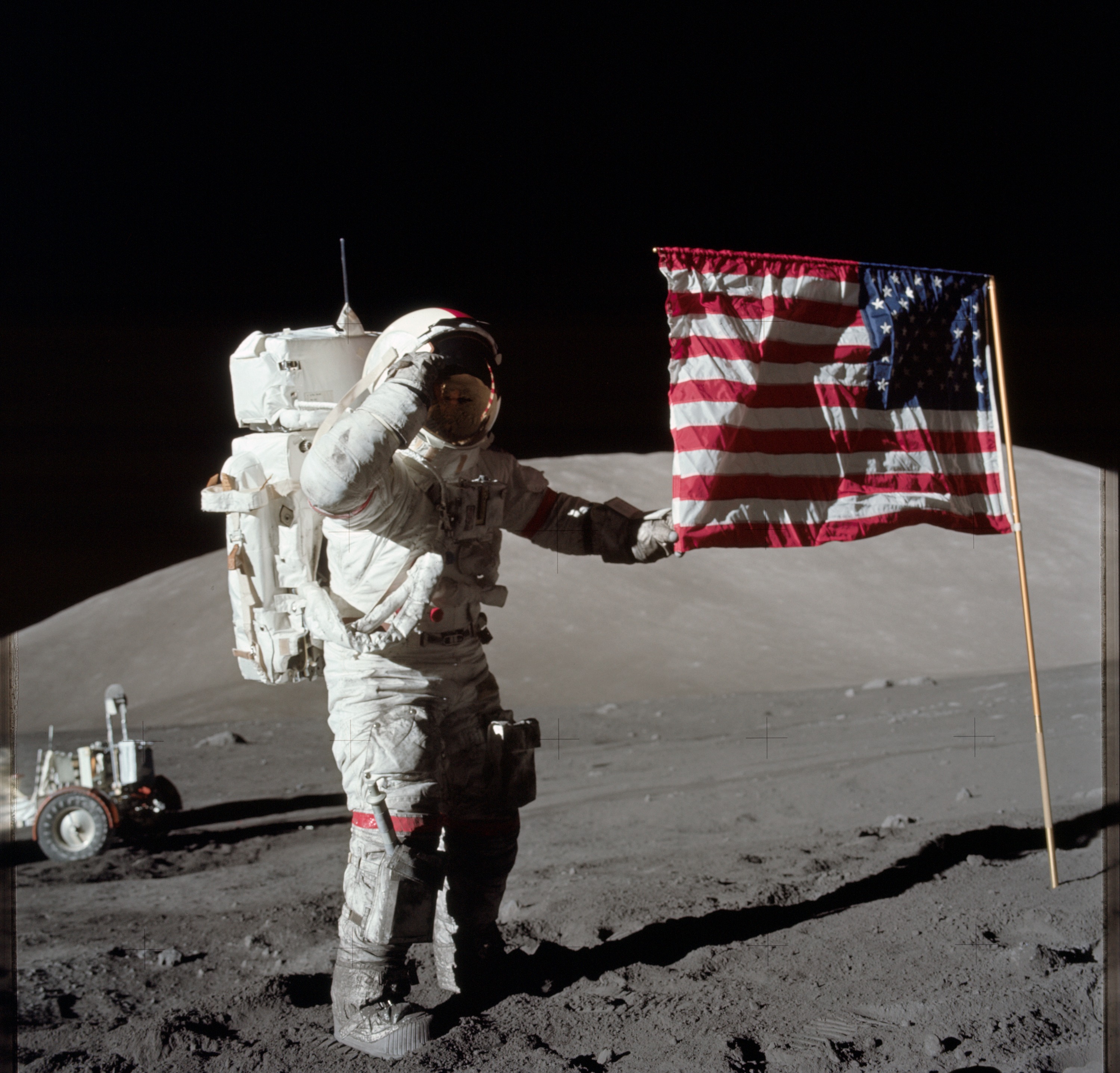
As part of this gargantuan campaign, in December 2018 NASA unveiled plans to work with U.S. companies “to design and develop new reusable systems for astronauts to land on the lunar surface”. Mr. Bridenstine stressed at the time that such plans would require the fostering of relationships with not only commercial entities and U.S. industry, but also international partners, in order to return to the Moon in a sustainable fashion.
Having issued a formal request for proposals for HLS systems, NASA announced last May the selection of 11 companies—Aerojet Rocketdyne, Blue Origin, Boeing, Dynetics, Lockheed Martin, Masten Space Systems, Northrop Grumman Innovation Systems (NGIS), OrbitBeyond, Sierra Nevada Corp., SpaceX and Space Systems/Loral (SS/L)—to conduct studies and produce prototype human landers for the newly-named Artemis lunar exploration program, with a plan to land the first crew at the Moon’s south pole by 2024 and establish sustainable missions to our nearest celestial neighbor by 2028.
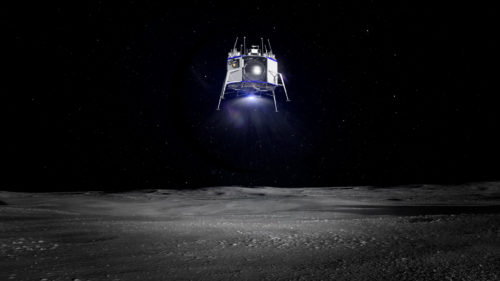
Blue Origin’s Blue Moon lander incorporates precision guidance and descent sensors, capable of achieving a soft landing anywhere on the lunar surface. Image Credit: Blue Origin
The contracts were awarded through the Next Space Technologies for Exploration Partnerships (NextSTEP) and awarded each company six months and a total award of $45.5 million to study and develop prototypes. As NextSTEP is a public/private partnership program, the companies were required to contribute at least 20 percent of the total project cost, in order to reduce taxpayer costs and encourage early private investment in the lunar economy.
Last September, NASA opened a formal call to industry for proposals for a new HLS system. “The first company to complete its lander will carry astronauts to the surface in 2024,” the agency noted, “and the second company will land in 2025.” This exceptionally short timeframe was made possible in part through the removal of “potential barriers to speed”, including less formalized means of assessing critical contractor data and minimal administrative overheads.
The Blue Origin National Team, led by Blue Origin of Kent, Wash., is a partnership which also includes Lockheed Martin, Northrop Grumman and Draper and envisages the construction of a three-stage Integrated Lander Vehicle (ILV). Blue Origin will develop the “descent element”, based on its Blue Moon concept and BE-7 liquid oxygen/hydrogen dual-expander engine. Previous details released by Blue Origin pertaining to Blue Moon indicate a capability to deliver around 9,900 pounds (4,500 kg) of payloads, supplies—and, in this case, also crew—to the lunar surface. Additionally, Lockheed Martin’s “ascent element” draws on the Orion spacecraft design and Northrop Grumman will tap into the heritage of its Cygnus cargo ship to furnish a “transfer element”. Draper will lead the descent guidance and avionics design architecture and it is expected that Lockheed Martin will play a leading role in crew flight operations and training.
“NASA’s Artemis program will be the next major milestone in the history of human spaceflight and we’re honored to be a part of it,” said Bob Smith, CEO of Blue Origin. “Our National Team brings unparalleled heritage, passion and innovation that will enable Americans to return to the lunar surface and inspire another generation. It’s time to go back to the Moon, this time to stay.”
Meanwhile, Dynetics of Huntsville, Ala., a wholly owned subsidiary of Leidos, envisages launching its Dynetics Human Landing System (DHLS) by means of NASA’s SLS Block IB rocket or the ULA Vulcan heavylifter with a “single structure” crew module capable of accommodating two astronauts for nominal missions from lunar orbit to the surface and back and affording them habitation on the Moon for about a week. Alternatively, it can ferry up to four suited astronauts to and from the surface. The “low-slung” crew cabin provides easy access directly to the surface.
And Dynetics is the propulsion system provider for Astrobotic’s Peregrine lunar lander, expected to ride the first Vulcan-Centaur next year. “There’s really no more exciting mission than delivering humans to other planetary bodies,” said Kim Doering, Dynetics vice president of space systems. “However, it’s also among the most challenging endeavors, particularly given the goal of landing on the Moon in 2024.” The Dynetics team reportedly covers 17 U.S. states, several NASA field centers and leverages “a broad and diverse set of small and midsize businesses”.
Additionally, SpaceX expects to use its single-stage Starship and Falcon Heavy technology to support a crewed return to the Moon. “SpaceX has been selected to develop a lunar-optimized Starship to transport crew between lunar orbit and the surface of the Moon,” the Hawthorne, Calif.-headquartered organization tweeted. It was noted in Thursday’s media teleconference that the “ample downmass capability” of Starship could deliver up to a hundred tons—some 200,000 pounds (90,000 kg)—of payloads, supplies and crew to the lunar surface, as well as trialing an in-space propellant transfer capability. The Falcon Heavy, for its part, has already conducted three successful missions between February 2018 and last June and currently stands as the most powerful rocket in operational service. Indeed, it was noted by Mr. Bridenstine that the HLS is not necessarily dependent upon the as-yet-unflown SLS as a launch vehicle. Although he pointed out that SLS will be the only vehicle human-rated to get to the Moon by 2024, the HLS “could launch on any number of rockets”.
Thursday’s HLS awards under the NextSTEP-2 Appendix H Broad Agency Announcement (BAA) carry a total combined value of $967 million for the ten-month base period, which ends next February. Speaking during the media teleconference, Ms. Watson-Morgan explained that the first three months of the process will be spent understanding the respective designs of Blue Origin, Dynetics and SpaceX, stressing that all carry different operating philosophies and architectures and will require different tests to reach fruition. “NASA will later select firms for development and maturation of sustainable lander systems, followed by sustainable demonstration missions,” the agency reported in its news release. “NASA intends to procure transportation to the lunar surface as commercial space transportation services after these demonstrations are complete.” Agency experts will work closely with each of the contract selectees to leverage decades of human spaceflight expertise with “the speed of the commercial sector” to achieve the 2024 target.
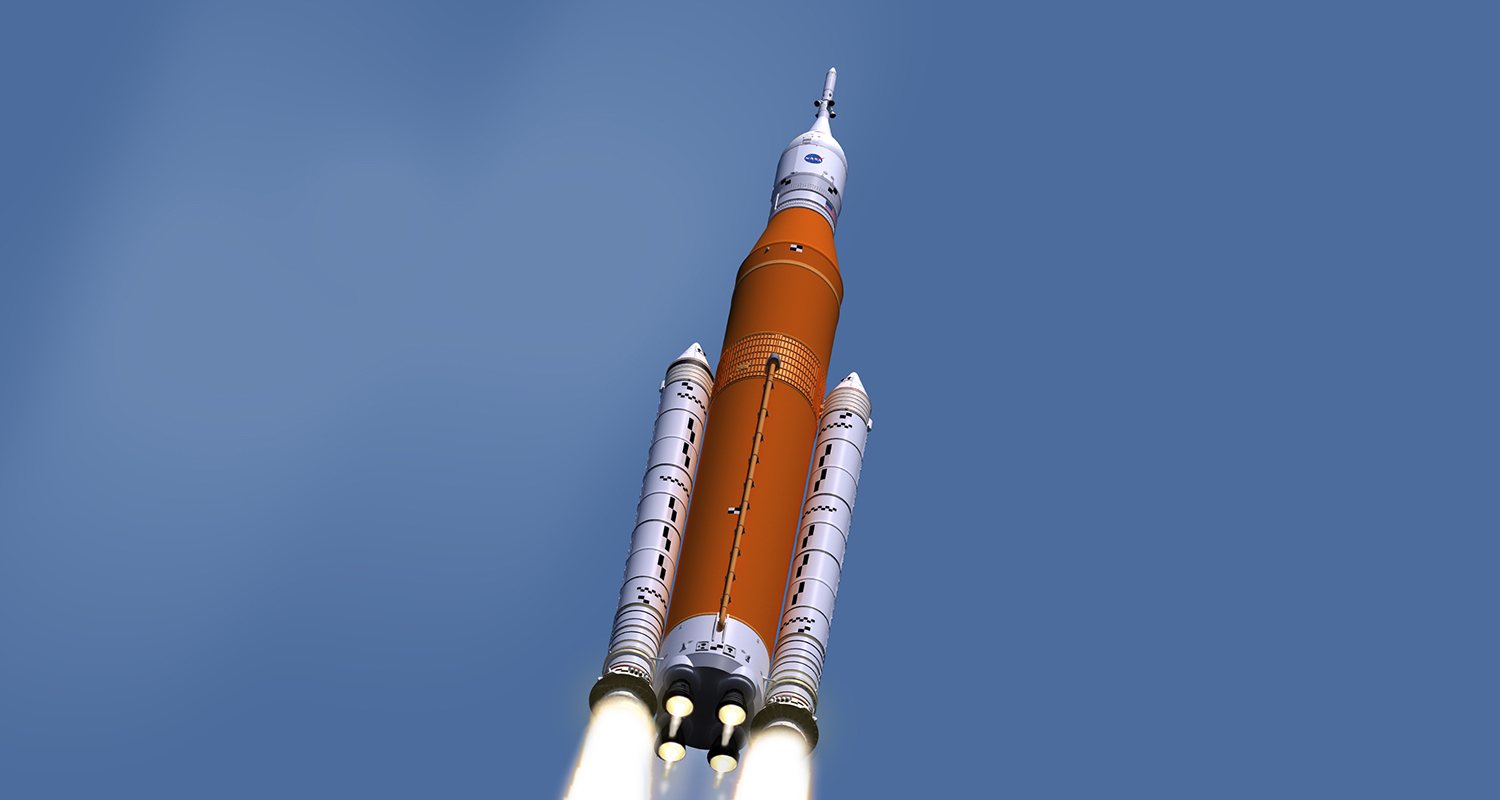
“We are on our way,” said Mr. Loverro. “With these awards, we begin an exciting partnership with the best of industry to accomplish the nation’s goals. We have much work ahead, especially over these next critical ten months. I have high confidence that working wit these teammates, we will succeed.”
The next ten months promise to be a critical process as America makes steady progress towards its goal of boots on lunar regolith in four years’ time. “Just a fantastic day,” Mr. Lovarro exulted, adding that going to the Moon quickly reduces the political risk of the program spiraling out of control and heading for the same cancelation which doomed its predecessors. But he added that an essential tenet is the need to return to the Moon sustainably. “The real challenge for Artemis is not just going fast to land with humans by 2024,” said Andy Crocker, director of space strategy and lunar program manager for Dynetics. “It’s being both fast in the near term and sustainable in the long term.”
.
.
FOLLOW AmericaSpace on Facebook and Twitter!
.
.




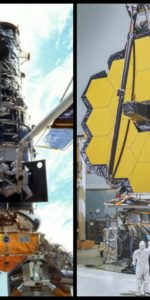
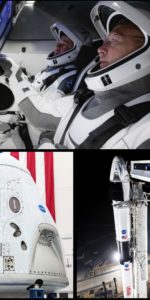
I sincerely hope that the last surviving moonwalkers will be around to see this happen. It would be a fitting tribute to their legacy.
I like it